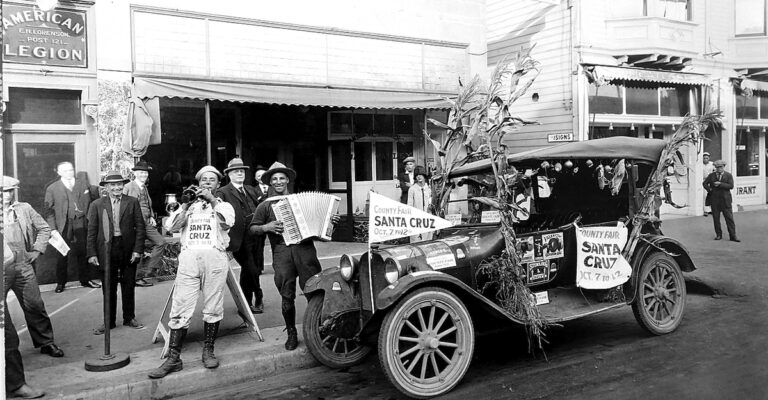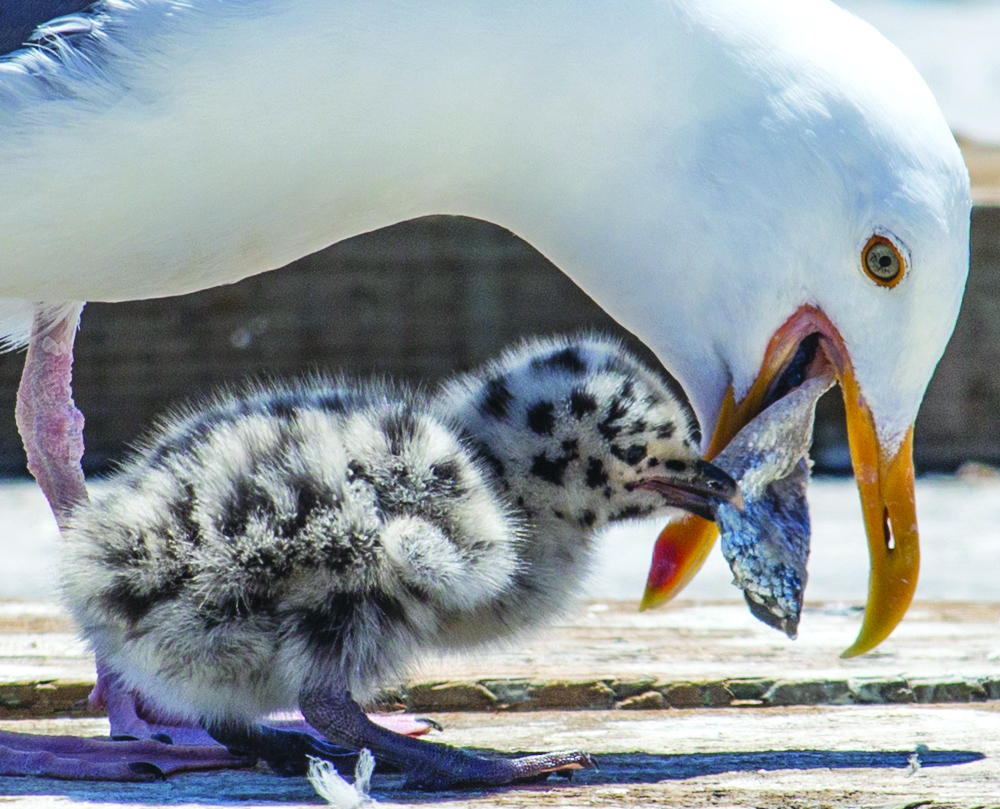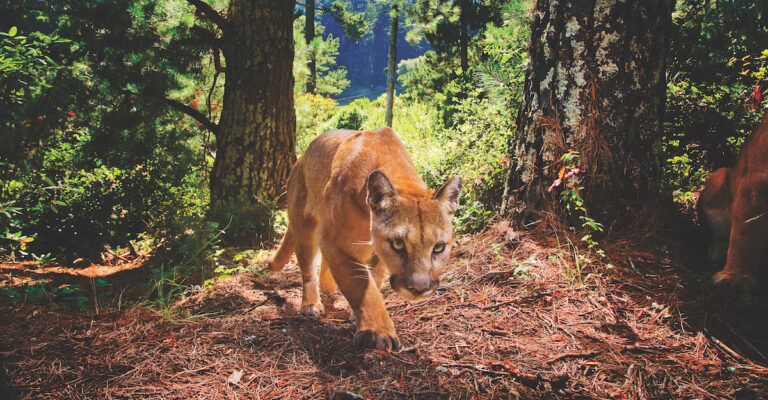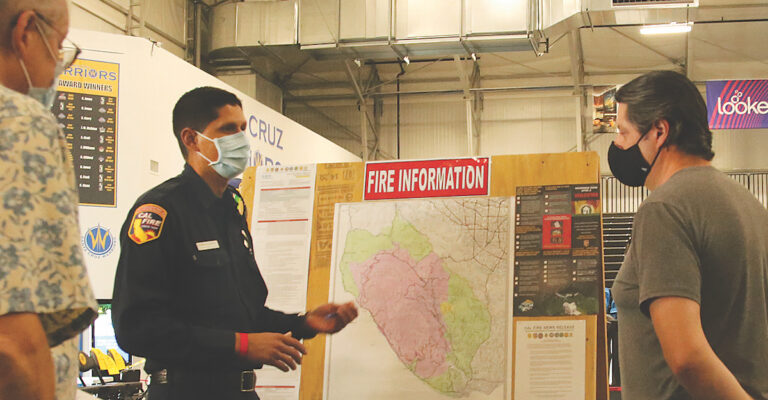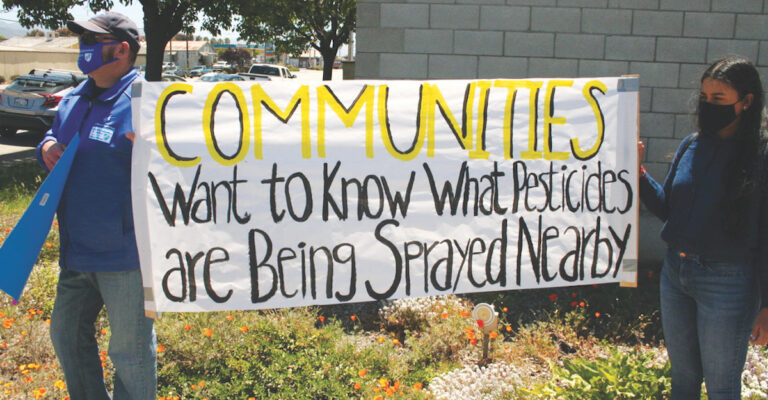A weekly guide to what’s happening.
ARTS AND MUSIC
“LISTEN TO THE VOICE OF ANTHONY ARYA” CD RELEASE PARTY! “Listen to the Voice of Anthony Arya” release party at Lille Aeske in Boulder Creek. The Voice EP: a collection of songs from Anthony’s journey on Season 15 of NBC’s The Voice, including the three songs he performed on the show, two songs he played during the audition process and a special duet with another Season 15 contestant, Sarah Grace. Friday, July 9, 6-9pm. lille æske, 13160 Central Ave., Boulder Creek.
BANFF CENTRE MOUNTAIN FILM VIRTUAL FESTIVAL All the programs! If you’ve been too busy getting after it outdoors, or just haven’t made the time yet, now’s your chance to catch all our Virtual World Tour Programs. Join us online for a mixed program of award winners from the 2020, 2019 and 2018 Banff Centre Mountain Film and Book Festivals. Catch up on missed films or relive some of the best that Banff has to offer. For more information and tickets, visit riotheatre.com or call 831-423-8209. Wednesday, July 7-Tuesday, July 13.
BOOMERIA ORGAN EXTRAVAGANZA Boomeria is a beloved place in the Santa Cruz mountains that is a monument to creativity in art, music, and science. The brainchild of Preston Boomer (longtime San Lorenzo Valley High School physics and chemistry teacher, now retired), Boomeria’s grounds are known for a working Baroque-style tracker pipe-organ built by Boomer and his students incorporating recycled and European organ pipes and recent work by organ builder Bill Visscher and friends. The “Kingdom of Boomeria” also includes a castle built for climbing (most especially for those with short legs) in a beautiful forest of redwood, bay-laurel, oak and madrone. Santa Cruz Baroque Festival’s annual Boomeria Organ Extravaganza—always occurring on or near Bastille Day—features organ performances by premier organists, a brass ensemble, a barrel organ, and a fencing demonstration. In-between enjoying the performances, guests can enjoy the gourmet snacks on offer, quaff some excellent wine, and enjoy gathering with fellow early-music enthusiasts in the beautiful setting. Saturday, July 10, 1-5pm. Boomeria, 60 Verde Drive, Santa Cruz.
COMMUNITY CONVERSATION: STORYTELLING THROUGH MURALS Join the Santa Cruz Museum of Art and History (MAH) in a community conversation centered around the value of acknowledging community truth, struggle, and resilience through murals with local artists. Together with MAH Outreach Coordinator, Helen Aldana, artist Guillermo Aranda, Ray Cancino of Community Bridges, and Mireya Contreras Gomez gather to share and talk about land acknowledgment, representation, collaboration, and the censorship of art in public spaces. Suggested donation $5, RSVP via Eventbrite at eventbrite.com/e/mah-community-conversations-storytelling-through-murals-tickets-161363002083. A Zoom link will be sent after registration. Thursday, July 8, 6-7pm.
GREATER PURPOSE COMEDY NIGHT Every Friday night at Greater Purpose Brewing it’s the Greater Purpose Comedy Show hosted by DNA and Chree Powell and featuring the best of California comedy. The show is 90 minutes long.Doors at 7pm, show at 7:30pm. Admission is $10 and we strongly suggest buying your tickets on Eventbrite in advance at eventbrite.com/e/greater-purpose-comedy-tickets-156589496399. Ages 16+. Friday, July 9, 7-9pm. East Cliff Brewing Co., 21517 E Cliff Drive, Santa Cruz.
SALSA SUELTA FREE ZOOM SESSION Keep in shape! Weekly online session in Cuban-style Salsa Suelta for experienced beginners and up. May include mambo, chachacha, Afro-Cuban rumba, orisha, son montuno. No partner required, ages 14 and older. Contact to get the link; visit salsagente.com. Thursday, July 8, 7pm.
T BONE MOJO BAND DAVENPORT ROADHOUSE Featuring professional veterans Fuzzy Oxendine, Les “Blues Buddha” Rosenthal, T Bone Mojo (Toby Gray) and Rick Hoornbeck. Veterans of the ’60s San Francisco and East Coast music scene Fun and Groovin’ up energy group often featuring special guests geared to getting the party going, folks tapping their feet and on the dance floor! Sunday, July 11, 1pm. Davenport Roadhouse Restaurant & Inn, 1 Davenport Ave., Davenport.
TOBY GRAY AT SCOPAZZI’S After nearly 100 years, Scopazzi’s continues to offer Italian cuisine with an extensive wine list and a full lounge. Cool, rockin’ to mellow jazz, and smooth with a repertoire of several hundred of your favorite songs and fun heartfelt originals. Great music and stories of touring with It’s A Beautiful Day, Dick Clark Productions, and a multitude of characters from San Francisco’s Summer of Love and Los Angeles music scenes. Saturday, July 10, 6:30-8:30pm.
COMMUNITY
GRAB AND GO STEAM: MAKE YOUR OWN ELECTROMAGNET! We provide the materials and directions – you pick them up and make them at home! This project is a great introduction to electromagnetism, the force that not only helps pick up squished cars in junkyard wars but is also responsible for a lot of the properties of matter in everyday life. Registration for a steam kit is required. To request a kit, fill out the form at docs.google.com/forms/d/e/1FAIpQLSfCSkgjTYJ-VlsCb-vu8I4iCyf7FghIaTekiT8rmIexfqliHA/closedform. First come, first served. Registration will close when all kits are claimed. Kits will be ready to pick up at a requested branch on July 14. These kits are suggested for children over age 8. CHOKING HAZARD: This kit contains small pieces and is not suitable for young children without adult supervision. Adult assistance may be required for some children and the kit includes small parts that are a choking hazard for young children.. Tuesday, July 13, 4-5pm.
GREY BEARS BROWN BAG LINE If you are able-bodied and love to work fast, this is for you! Grey Bears could use more help with their brown bag production line on Thursday and Friday mornings. As a token of our thanks, we make you breakfast and give you a bag of food if wanted. Be at the warehouse with a mask and gloves at 7am, and we will put you to work until at least 9am! Call ahead if you would like to know more: 831-479-1055, greybears.org. Thursday, July 8, 7am. California Grey Bears, 2710 Chanticleer Ave., Santa Cruz.
GROUPS
CAREGIVER SUPPORT GROUP – VIA ZOOM Support groups create a safe, confidential, supportive environment or community and a chance for family caregivers to develop informal mutual support and social relationships as well as discover more effective ways to cope with and care for your loved one. Meeting via Zoom and phone. To register or ask questions please call 800-272-3900. Wednesday, July 7, 5:30pm. Saturday, July 10, 10-11:30am.
COMPASSIONATE FRIENDS OF SANTA CRUZ Parents of a child who died at any age, from any cause, any length of time ago, are invited to join The Compassionate Friends of Santa Cruz for our monthly grief support meeting. Opening circle followed by smaller connection groups. Sharing is optional. Grief materials are available. Bereaved grandparents and adult siblings also welcome. Non-religious. Monday, July 12, 7-8:30pm. Quaker Meeting House, 225 Rooney St., Santa Cruz.
ENTRE NOSOTRAS GRUPO DE APOYO Entre Nosotras support group for Spanish-speaking women with a cancer diagnosis. Meets twice monthly. Registration required: call Entre Nosotras at 831-761-3973. Friday, July 9, 6pm.
OVEREATERS ANONYMOUS All our OA meetings have switched to being online due to sheltering in place. Please call 831-429-7906 for meeting information. Do you have a problem with food? Drop into a free, friendly Overeaters Anonymous 12-Step meeting. All are welcome!. Thursday, July 8, 1-2pm.
WOMENCARE ARM-IN-ARM WomenCARE ARM-IN-ARM Cancer support group for women with advanced, recurrent, or metastatic cancer. Meets every Monday at WomenCARE’s office. Currently on Zoom. Registration required, call WomenCARE at 831-457-2273. All services are free. For more information visit womencaresantacruz.org. Monday, July 12, 12:30pm.
WOMENCARE TUESDAY SUPPORT GROUP WomenCARE Tuesday Cancer support group for women newly diagnosed and through their treatment. Meets every Tuesday currently on Zoom. Registration required, call WomenCARE 831-457-2273. Tuesday, July 13, 12:30-2pm.
WOMENCARE: LAUGHTER YOGA Laughter yoga for women with a cancer diagnosis. Meets every Wednesday, currently via Zoom. Registration required, call WomenCARE at 831-457-2273. Wednesday, July 7, 3:30-4:30pm.
OUTDOOR
CASFS FARMSTAND Organic vegetables, fruit, herbs and flowers are sold weekly at the CASFS Farmstand, starting June 15 and continuing through Nov. 23. Proceeds support experiential education programs at the UCSC Center for Agroecology & Sustainable Food Systems. Wednesday, July 7, Noon-6pm. Friday, July 9, Noon-6pm. Tuesday, July 13, Noon-6pm. Cowell Ranch Historic Hay Barn, Ranch View Road, Santa Cruz.
CLIMATE, LAND AND WATER OUTDOOR MEDITATION This is a public meditation/demonstration, to raise our spirits, raise awareness, and raise the vibration in these troubled times. We will begin with Land Acknowledgement and Calling the Corners and then silent meditation, ending around 3:30pm. All are welcome! Please arrive early to find parking and get settled in. We will gather on the lawn near the Lighthouse, look for the Novasutras signs. You are welcome to bring your own sign to hold or wear around your neck, with inspiring messaging about the climate and environmental crises. See bit.ly/SCOM4CH for info. Sunday, July 11, 2:30pm.
FELT STREET FLEA MARKET The Felt Street Community Flea Market is Saturday, July 10, at the Center for Spiritual Living in Santa Cruz. Shopping will be open and 15 vendors will be selling treasures and creations from A-Z. Come out and enjoy this festive shopping event while finding great deals on clothing, toys, housewares, tools, fishing gear, handmade and imported jewelry, collectibles and more. Saturday, July 10, 9am-2pm. Center for Spiritual Living, 1818 Felt St., Santa Cruz.
HISTORIC RANCH GROUND TOUR Discover what life was like a century ago on this innovative dairy ranch. This hour-long tour includes the 1896 water-powered machine shop, barns and other historic buildings. The vehicle day-use fee is $10. For more information, call 831-426-0505. Spaces are limited and early pre-registration is recommended. Attendees are required to self-screen for Covid-19 symptoms when pre-registering. Masks and social distancing are also required at all programs. To register, visit santacruzstateparks.as.me/schedule.php. Saturday, July 10, 1pm. Sunday, July 11, 1pm. Wilder Ranch State Park, 1401 Coast Road, Santa Cruz.
NEW BRIGHTON JUNIOR RANGERS This fun one-hour program offers kids, ages 7-12, an opportunity to earn prizes while learning about birds, sea life, and local park animals, playing games, and doing arts and crafts. Meet at the campground Ramada. For more information, call 831-685-6444. Spaces are limited and early pre-registration is recommended. Attendees are required to self-screen for COVID-19 symptoms when pre-registering. Masks and social distancing are also required at all programs. To register, visit santacruzstateparks.as.me/schedule.php. Friday, July 9, 3pm. Saturday, July 10, 3pm. New Brighton Beach, 1500 Park Ave., Capitola.
NEW BRIGHTON LITTLE RANGERS Any and all 3-6 year-olds are invited to play games, listen to stories and songs, and learn about nature! Smiles, laughter, and good times abound at this program, and it’s a fantastic way to begin your morning in the park. Meet at the campground Ramada. For more information, call (831) 685-6444. Spaces are limited and early pre-registration is recommended. Attendees are required to self-screen for Covid-19 symptoms when pre-registering. Masks and social distancing are also required at all programs. To register, visit santacruzstateparks.as.me/schedule.php. Friday, July 9, 11-11:30am. Saturday, July 10, 11-11:30am. New Brighton Beach, 1500 Park Ave., Capitola.
PARADIGM SPORT SUMMER BASEBALL CAMP Come to the Paradigm Sport baseball camp and experience the best baseball camp on the Central Coast. Over the course of a fun week with friends and teammates, kids get coached up by our staff of current and former pros on the skills, knowledge and mental approach they need to be strong, all-around players. Areas of focus include hitting, pitching, infield and outfield play, base running and more. At Paradigm Sport, our goal is to provide young players in and around Santa Cruz County with the highest-quality baseball instruction possible. Our summer camp is one of our favorite ways to do it!. Monday, July 12, 9am-2pm. Tuesday, July 13, 9am-2pm. Paradigm Sport, 120 Dubois St., Santa Cruz.
PERMACULTURE DESIGN CERTIFICATE COURSE Permaculture is an ethically based whole-systems design approach that uses concepts, principles, and methods derived from ecosystems, indigenous peoples, and other time-tested systems to create human settlements and institutions. It’s also been called “saving the planet while throwing a better party.” The Santa Cruz Permaculture Design Certificate course includes the internationally recognized 72-hour curriculum, augmented by an additional 38-hours of hands-on practice and field trips. Plus, folks have the option to camp on-site each weekend, and build community around the fire! Our course brings in leading designers and teachers from around the region, each an expert in different areas of permaculture. The Santa Cruz Permaculture network of instructors, alumni, community partners, and resources continues to grow each season, and by participating in our course, you become part of this network! Additionally, course participants work in teams throughout the six-month program to design a holistic permaculture plan for a real-life property in the community. The hands-on learning, workshops, and readings throughout the course prepare students with knowledge and whole systems thinking strategies that allow them to create detailed and thoughtful design projects. We will be adhering to the latest Covid-19 recommendations and precautions. Learn more and register at santacruzpermaculture.com/permaculture-design-course. Saturday, July 10, 9am-5pm. Sunday, July 11, 9am-5pm. Santa Cruz Permaculture, 343 Soquel Ave., Santa Cruz.
SUNSET BEACH BOWLS Experience the tranquility, peace and calmness as the ocean waves harmonize with the sound of Crystal Bowls raising your vibration and energy levels. Every Tuesday one hour before sunset at Moran Lake Beach. Call 831-333-6736 for more details. Tuesday, July 13, 7:15-8:15pm. Moran Lake Park & Beach, East Cliff Drive, Santa Cruz.
YOU PICK ROSES We are growing over 300 roses, deeply fragrant, lush and in every color, and we want to share them with you! Get out of the house and enjoy cutting a bucket of roses for your own pleasure or to share with family and friends. Once you have made a purchase, you will be sent a calendar link to pick a time for your reservation and directions to our farm in Watsonville. Visit birdsongorchards.com/store/you-pick-roses for more information. Friday, July 9, 11am. Sunday, July 11, 11am.


